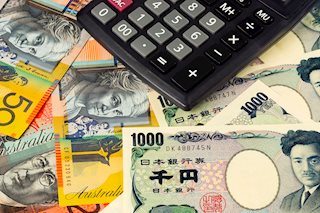AUD/JPY hovers around 98.00, upside seems possible due to uncertainty over BoJ rate hikes
|
- AUD/JPY gains ground as the uncertainty continues over the timing of interest rate hikes by the Bank of Japan.
- Japan's Economy Minister, Ryosei Akazawa, offers no clear indication of when the BoJ may raise interest rates.
- The AUD weakens as ANZ revises its outlook, now forecasting a 25-basis points rate cut by the RBA in February.
AUD/JPY remains steady after its recent losses registered in the previous session, trading around 98.00 during the early European hours on Friday. The AUD/JPY cross may appreciate as the Japanese Yen (JPY) depreciates due to continued uncertainty over the timing of interest rate hikes by the Bank of Japan (BoJ).
Japan's Economy Minister, Ryosei Akazawa, stated on Friday that the country is at a "critical stage" in overcoming the public's deflationary mindset. Akazawa added, “Once we can officially declare the end of deflation, we will be able to stop using the tools we’ve had in place to combat it.”
However, the upside of the AUD/JPY cross could be restrained as the Australian Dollar (AUD) faces challenges as the ANZ is now forecasting a 25 basis points (bps) rate cut by the Reserve Bank of Australia (RBA) in February.
The Australian Dollar struggled as the trimmed mean, a closely watched measure of core inflation, fell to an annual 3.2% from 3.5%, edging closer to the Reserve Bank of Australia's (RBA) target band of 2% to 3%. Markets are currently divided on whether the RBA will act in February, but a quarter-point rate cut in April is fully priced in.
Additionally, the Aussie Dollar found no support from China's latest inflation data, which highlighted increasing deflationary risks. China's Consumer Price Index (CPI) increased by 0.1% year-over-year in December, slightly lower than the 0.2% rise in November. Meanwhile, monthly inflation remained unchanged at 0% in December. Any change in Chinese economic conditions could impact the Australian markets as both nations are close trading partners.
Central banks FAQs
Central Banks have a key mandate which is making sure that there is price stability in a country or region. Economies are constantly facing inflation or deflation when prices for certain goods and services are fluctuating. Constant rising prices for the same goods means inflation, constant lowered prices for the same goods means deflation. It is the task of the central bank to keep the demand in line by tweaking its policy rate. For the biggest central banks like the US Federal Reserve (Fed), the European Central Bank (ECB) or the Bank of England (BoE), the mandate is to keep inflation close to 2%.
A central bank has one important tool at its disposal to get inflation higher or lower, and that is by tweaking its benchmark policy rate, commonly known as interest rate. On pre-communicated moments, the central bank will issue a statement with its policy rate and provide additional reasoning on why it is either remaining or changing (cutting or hiking) it. Local banks will adjust their savings and lending rates accordingly, which in turn will make it either harder or easier for people to earn on their savings or for companies to take out loans and make investments in their businesses. When the central bank hikes interest rates substantially, this is called monetary tightening. When it is cutting its benchmark rate, it is called monetary easing.
A central bank is often politically independent. Members of the central bank policy board are passing through a series of panels and hearings before being appointed to a policy board seat. Each member in that board often has a certain conviction on how the central bank should control inflation and the subsequent monetary policy. Members that want a very loose monetary policy, with low rates and cheap lending, to boost the economy substantially while being content to see inflation slightly above 2%, are called ‘doves’. Members that rather want to see higher rates to reward savings and want to keep a lit on inflation at all time are called ‘hawks’ and will not rest until inflation is at or just below 2%.
Normally, there is a chairman or president who leads each meeting, needs to create a consensus between the hawks or doves and has his or her final say when it would come down to a vote split to avoid a 50-50 tie on whether the current policy should be adjusted. The chairman will deliver speeches which often can be followed live, where the current monetary stance and outlook is being communicated. A central bank will try to push forward its monetary policy without triggering violent swings in rates, equities, or its currency. All members of the central bank will channel their stance toward the markets in advance of a policy meeting event. A few days before a policy meeting takes place until the new policy has been communicated, members are forbidden to talk publicly. This is called the blackout period.
Information on these pages contains forward-looking statements that involve risks and uncertainties. Markets and instruments profiled on this page are for informational purposes only and should not in any way come across as a recommendation to buy or sell in these assets. You should do your own thorough research before making any investment decisions. FXStreet does not in any way guarantee that this information is free from mistakes, errors, or material misstatements. It also does not guarantee that this information is of a timely nature. Investing in Open Markets involves a great deal of risk, including the loss of all or a portion of your investment, as well as emotional distress. All risks, losses and costs associated with investing, including total loss of principal, are your responsibility. The views and opinions expressed in this article are those of the authors and do not necessarily reflect the official policy or position of FXStreet nor its advertisers.